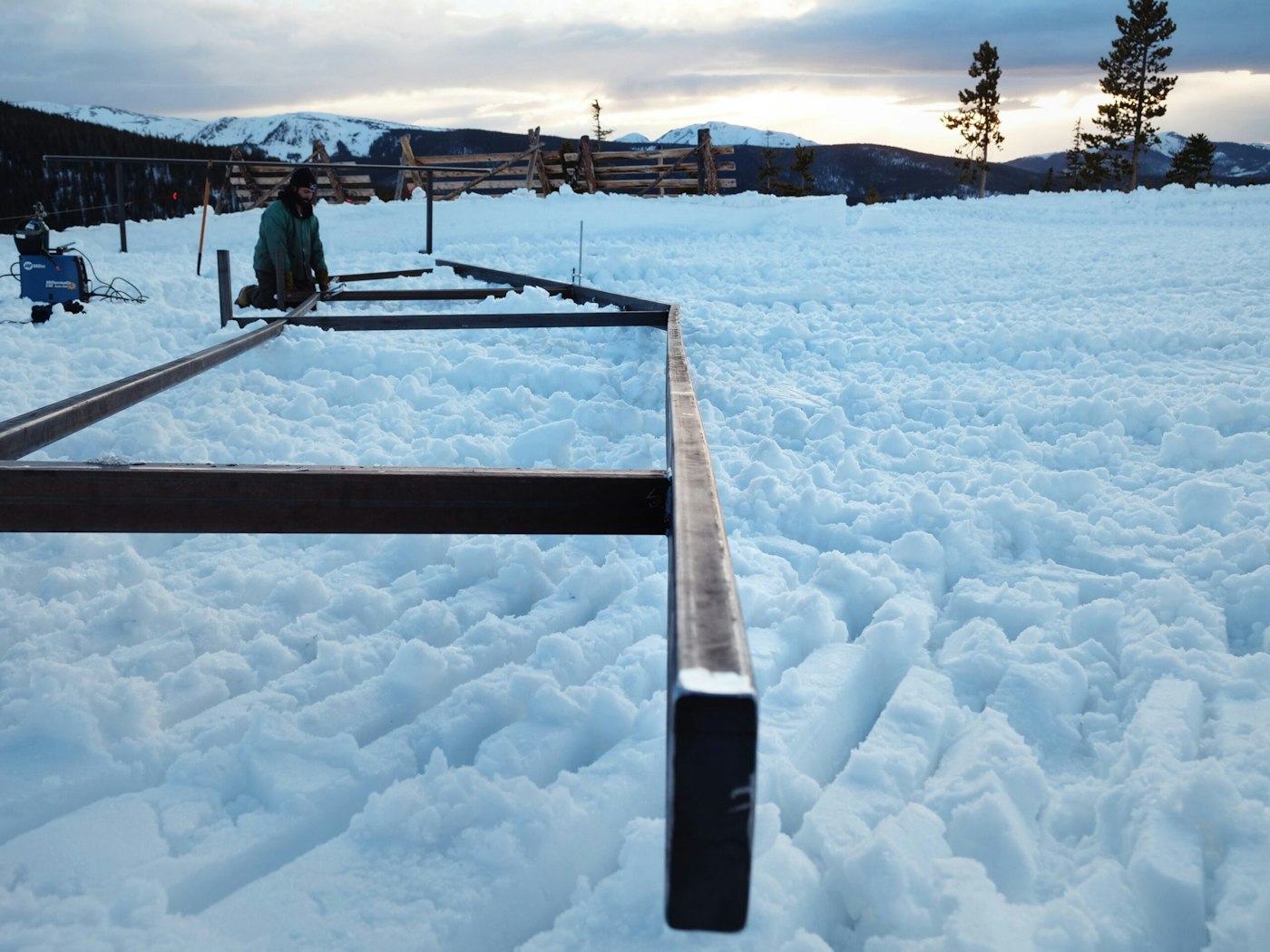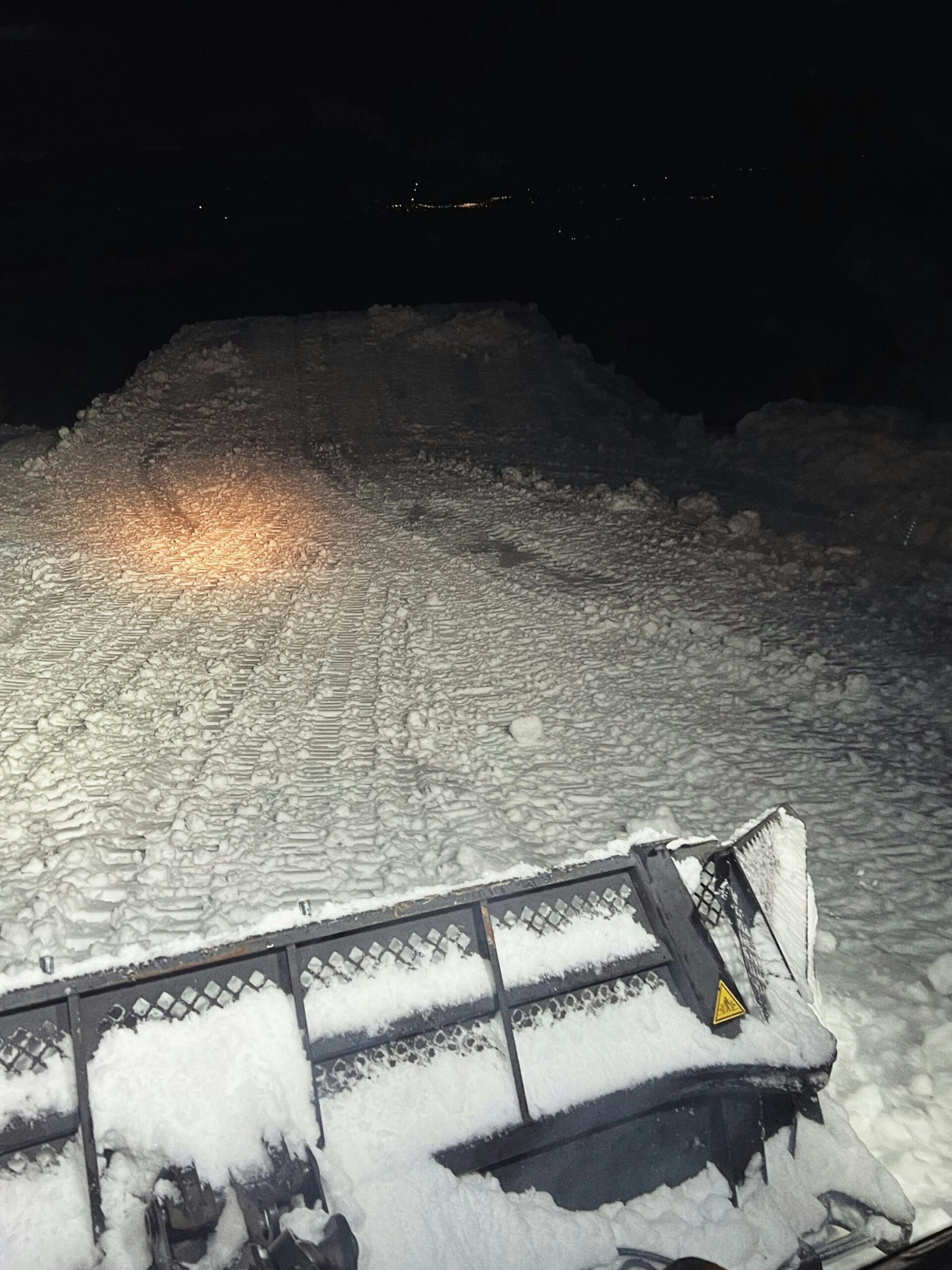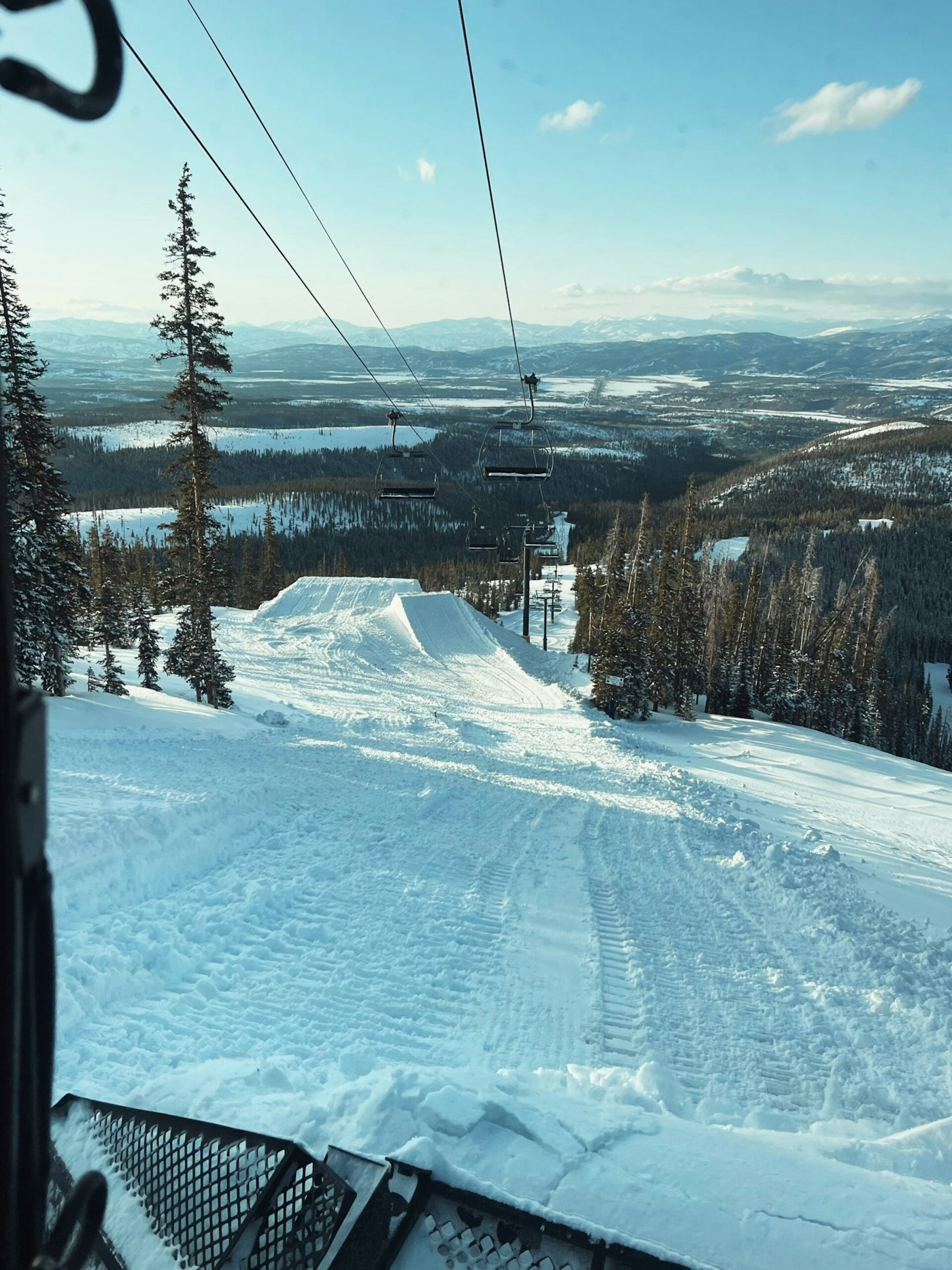INTERVIEW • Jordan Grant-Krenz | PHOTOS • Courtesy of Bobby Brown
Featured Image – Bobby & Peter Brown
As you may have heard, Red Bull Cascade is descending upon the legendary Winter Park Resort, in beautiful Colorado this weekend, April 21-22. The new competition is unlike anything you’ve seen before, featuring a two-mile-long course, unparalleled creativity, a head-to-head bracket format and riders from all different disciplines of skiing. The idea is to blend freestyle, slopestyle and all-mountain riding into an event that is as exciting as it is relatable. Simply put, it’s a fresh take on freeskiing’s competition scene.
Red Bull Cascade is the brainchild of none other than Bobby Brown. One of the most storied riders in the sport’s history, the Colorado raised X Games gold medalist decided to take matters into his own hands. He’s no stranger to big air and slopestyle competitions, nor to the world of freestyle filming. As someone who has spent time in both the technically strict (competitions) and the creatively free (filming) worlds of skiing, he’s an ideal mind to put behind an event that blends the two. Alongside his friends at Red Bull and with the help of some of the most talented park shapers in the world, Brown is bringing this incredible vision to life. It’s a project he hopes will inject new life into competitions, serve as a platform for young riders and encourage creative and distinctive riding.
FREESKIER wanted to know what motivated Brown to bring an event like Cascade to life, and how he thinks it will benefit the ski community at large. We sat down with the main man to get the words straight from the source. Injuries, motivation, Mobb Deep, step-up jumps and life lessons; it’s all on the table as we talk Red Bull Cascade with Bobby Brown.
You’ve seen almost every avenue of the ski industry at this point. What drew you to help create this event (Red Bull Cascade), and how do you think an event like this will benefit the ski community?
I really wanted to help provide a place where people could ski how they want and not feel limited by the course or the judging. The level of technicality that’s asked for in contests these days makes it hard to comprehend the tricks that skiers are throwing, even for someone experienced like me. The vision behind [Cascade] was to make a relatable event that focused on all-mountain riding, emphasizing the moments in between the features. We wanted to bring it back to the viewers and make them feel like they could be out here on this course.
And for younger riders, hopefully they see this and draw inspiration from how many different ways there are to ride. I also hope they see an avenue in which they can win a contest by being creative, and not necessarily by being the most technically proficient. Those were the big reasons why I felt like it was time to do something like this; to give riders this type of freedom in a contest and bring a sense of relatability to those watching. We want to do it differently, to encourage creative riding and incentivize more quality. It’s never easy to shake things up, but Red Bull has been super supportive ever since we pitched the idea and I’m so glad we’re making it happen.
How is this competition (scoring, course, etc.) different from other events that people might know like X Games and Dew Tour? How does it compare to events like the late great Red Bull Cold Rush or Playstreets?
It’s certainly going to be different from competition formats that people know. It’ll be a head-to-head bracket, one run per round with single elimination. To be honest, we’re not too sure how the scoring is going to work, but I see that as the beauty in this event. We have three talented, accomplished World Cup judges lined up, and it’s going to be a collaborative effort when deciding what to look for. We’ll make sure the athletes have their voices heard and express how they think it should be scored, and that they know what we’re looking for. Everyone I’ve been in contact with, judges and athletes, all seem to like this collaboration more than the alternative of just telling someone what they have to do.
The goal is to have a rider like Alex Hall go up against someone like Blake Wilson, and even though they have very different styles, they could play a game that’s scored off creativity and execution instead of technical precision and time. I think this will open it up more, and allow these skiers to have a slip early on but make up for it later in their run. The course is two miles long after all, so we’re expecting people to mess up. The format is set up so that riders can take a new or different route, express their own style, and have some leeway in terms of falling. Like I said, we want to reward that creativity and line choice.
Give us a brief walkthrough of the massive two-mile course. Which two features are your favorite?
There’s one starting point that dives off into two different lines. After the first feature, you can either stay in your line or you can go into the other one. I loved the idea of pliability, and being able to change your line run to run so we made sure that was an option.
The right run starts with a 40-foot disco box and includes a 30-foot jump through the trees, a freeride section, a 60-foot channel gap to swap lines and a 40-foot cannon rail to name a few features. The left run kicks off with a ginormous up, flat, down rail we’re calling the ‘battleship’ and includes a 30-foot step down, a freeride section and a 40-foot pole jam among other features.
Brown talked us through the course from top to bottom. Check out the Course Map with his detailed annotations at the bottom.
A lot of these features are from my own memory growing up. The massive disco box for example is similar to one we hit at a shoot with Matchstick Productions back in the day at Stevens Pass [Washington]. They’re all designed to be flowy and encourage the riders to think about the continuous line and just have fun. If I had to pick my two favorite features, the first would be the Battleship rail. I’m so excited to ride that thing and see what people do on it. The second has to be the channel gap connecting the cannon rail to the landing. I have to give a huge shout out to Charles Beckinsale. He’s been instrumental in creating these features, many of which have multiple options and are not easy to build.

Was it vital for you to bring this contest to your home state of Colorado, or did it just shake out like that?
It wasn’t a necessity, but I’m so stoked to bring this to Colorado and to be at Winter Park. The resort team has been very accommodating. They’re shutting down a whole lift early to give us access to our own section of the mountain. Plus their terrain park manager, Deven Kearns; he’s extremely supportive when it comes to making events like this happen. Building this type of course is not easy, and having people like Deven on the ground is the most crucial thing. He, Charles [Beckinsale], Brandon Dodds and the whole cat crew have been incredible during this process of building for the last couple of weeks. Ideally, I’d like to build a course in the future on terrain that’s a bit steeper, but for the inaugural year, we couldn’t have asked for a better spot.
How were the invites structured for the competition? Was it based on any previous competitive success, or just skiers who are on top of their game right now?
We wanted to make sure to bring in everyone from last year’s test build. They were very supportive even when we didn’t have a clear idea of what it would be. From there we made sure to mix it up with some all-mountain folks, some park riders and everyone in between. There was no ranking or anything like that.
Who are you most excited to see ride the course this year?
Tom Wallisch is swinging through, so it’ll be great to watch him as always. Taylor [Brooke Lundquist] also comes to mind. She’s super smooth and isn’t a traditional slopestyle or competition skier, which gives her a different perspective on features. I can’t wait to see how she approaches the course. I’m pumped to see Colby Steveson and Ben Smith on it as well. Colby has been on another level this competition season, and Ben was such a help last year building, and his riding was just incredible. He placed second in our rider-judged competition, so I can’t wait to see what he brings this year.
Give us two songs that you’ll bump on your first lap through the course.
I’ll probably have to go with ‘Youths Gone Wild’ by Skid Row and ‘Shook Ones’ by Mobb Deep. Shoutout to Oakley, both of those songs are in their team video ‘1242’. If you haven’t seen it I’d make that a priority. I haven’t found a full copy of it online though, so if anyone can track that down let me know!

If you can watch one rider (past or present, snowboard or ski) hit this course top to bottom, who would it be?
Seeing Jossi Wells out here would be insane. Unfortunately, he couldn’t make it out this year. He’s one of those guys who can connect transitions like nobody else, and I honestly tried to think about that a lot when we were designing the course. Hopefully, he’ll be out here next year.
Do you have a vision of what Red Bull Cascade will look like moving forward?
I would love it if [Red Bull Cascade] could continue on. It’s great to provide a platform for riders who deserve eyes on them but maybe don’t flourish in the standard comp scene. I do think that competitions can be great, and maybe this can serve as a model for a new format. I mean, [competitions] get a bad wrap sometimes but it can be pretty damn cool when everything comes together.
For those who don’t know, you had a serious back injury last winter at Saas Fee. We’re very glad to see that you’re back on skis now. How did your recovery and the subsequent season reshape how you look at skiing and your career, if at all?
It’s been a pretty brutal few years of injuries for sure. The year before I was dealing with some knee stuff, and then I went to Europe trying to get my tricks back and regain some confidence in the park. Last day of the trip, I landed on my back and spent 10 days in the hospital out there and had another surgery in March of 2022. Through it all, I can confidently say that I’ve never had any wavering on whether or not this is the path I want to continue on, but there have certainly been times when I’ve wondered if it was possible.
It feels like my body is stronger than my mind, I’ll say that. This year has been about getting my body back to normal and feeling consistent. Right now I’d say I’m at about 80% on the best days. I’ve had an incredible support system and owe my family and friends so much for the time and love they’ve given me. I’ve also drawn a lot of inspiration from Candide [Thovex]. He’s obviously set the bar pretty high when it comes to what’s possible after a back injury. I’ll say that helping put on an event like this is very rewarding, and I feel extremely fortunate nonetheless.
Even though you’ve been a professional skier for a decade and a half, your aspirations and passion for skiing don’t seem to be diminishing. What do you hope to get out of skiing in the coming years, and what do you hope to give or leave behind?
I honestly think my best skiing is still ahead of me. It’s been a few years of battling to get my body back to where I want it to be, but there is no doubt in my mind that I can make it there. My goal is absolutely to get my level of skiing back to where it was and surpass it. I know it’s going to be an uphill fight, but with time and dedication, I’m positive that I can do it.
As far as what I want to bring to skiing, I want to put time into creating opportunities and platforms for young riders. When I was coming up we had the Big Bear Open, we had the North American Open, all these events that served as breeding grounds and that really assured young riders like me, ‘Hey, this is a viable thing I can do!”, and I want to make sure that continues on. I’m certainly thinking about how I can get back to my healthiest self, but I’ve realized that there’s so much I can do in the meantime.
At the end of the day, I don’t want to focus only on myself. I genuinely want to help build other people up and push the sport on while creating a stronger community. I look at this Cascade event as a place where people can come together, see great riding and enjoy themselves. Skiing has brought me and so many others such insane joy throughout life, and as long as I can keep that going, I’ll be happy.
Red Bull Cascade 2023 – Winter Park Course Map


– Disco box
– 40-foot step down into trees
– 40-foot step down out corner transfer jump
OR
– Ski jump, mogul line
– Cannon ‘uprail’ gap to landing
– Cat track to field goal jump through trees
– Quarter pipe jump
– Final double jump
Skiers Left line:
– Battleship rail
– 40-foot ‘Spider Web’ into trees
– Log Jam out
– Traditional hip jump
– 50-foot step down tree tap, tree section
– Final double jump
Photo Gallery
Images Courtesy of Bobby Brown and Red Bull


Bobby Brown and your friendly neighborhood ski patroller at last year’s test build


The monstrous Battleship rail being forged into shape


A Winter Park sunset above cat-churned snow


Josh Conroy rides the rainbow at last year’s test build


The build must go on!



Preparing the prized transfer gap
Tune in April 20-22 for the first-ever Red Bull Cascade in Winter Park, Colorado.
![[Q&A] Bobby Brown talks life, liberty and the pursuit of Red Bull Cascade; a revolutionary freeskiing competition](https://www.datocms-assets.com/163516/1751484728-bobby2.png?auto=format&bg=FFFFFF&w=100)
![[Q&A] Bobby Brown talks life, liberty and the pursuit of Red Bull Cascade; a revolutionary freeskiing competition](https://www.datocms-assets.com/163516/1751484728-bobby2.png?auto=format&bg=FFFFFF&w=1200)
![[GIVEAWAY] Win a Head-to-Toe Ski Setup from IFSA](https://www.datocms-assets.com/163516/1765920344-ifsa.jpg?w=200&h=200&fit=crop)

![[GIVEAWAY] Win a Legendary Ski Trip with Icelantic's Road to the Rocks](https://www.datocms-assets.com/163516/1765233064-r2r26_freeskier_leaderboard1.jpg?w=200&h=200&fit=crop)

![[GIVEAWAY] Win a Legendary Ski Trip with Icelantic's Road to the Rocks](https://www.datocms-assets.com/163516/1765233064-r2r26_freeskier_leaderboard1.jpg?auto=format&w=400&h=300&fit=crop&crop=faces,entropy)




![[GIVEAWAY] Win a Head-to-Toe Ski Setup from IFSA](https://www.datocms-assets.com/163516/1765920344-ifsa.jpg?auto=format&w=400&h=300&fit=crop&crop=faces,entropy)


![[Q&A] Bobby Brown talks life, liberty and the pursuit of Red Bull Cascade; a revolutionary freeskiing competition](https://www.datocms-assets.com/163516/1751484728-bobby2.png?auto=format&bg=FFFFFF&w=2000)